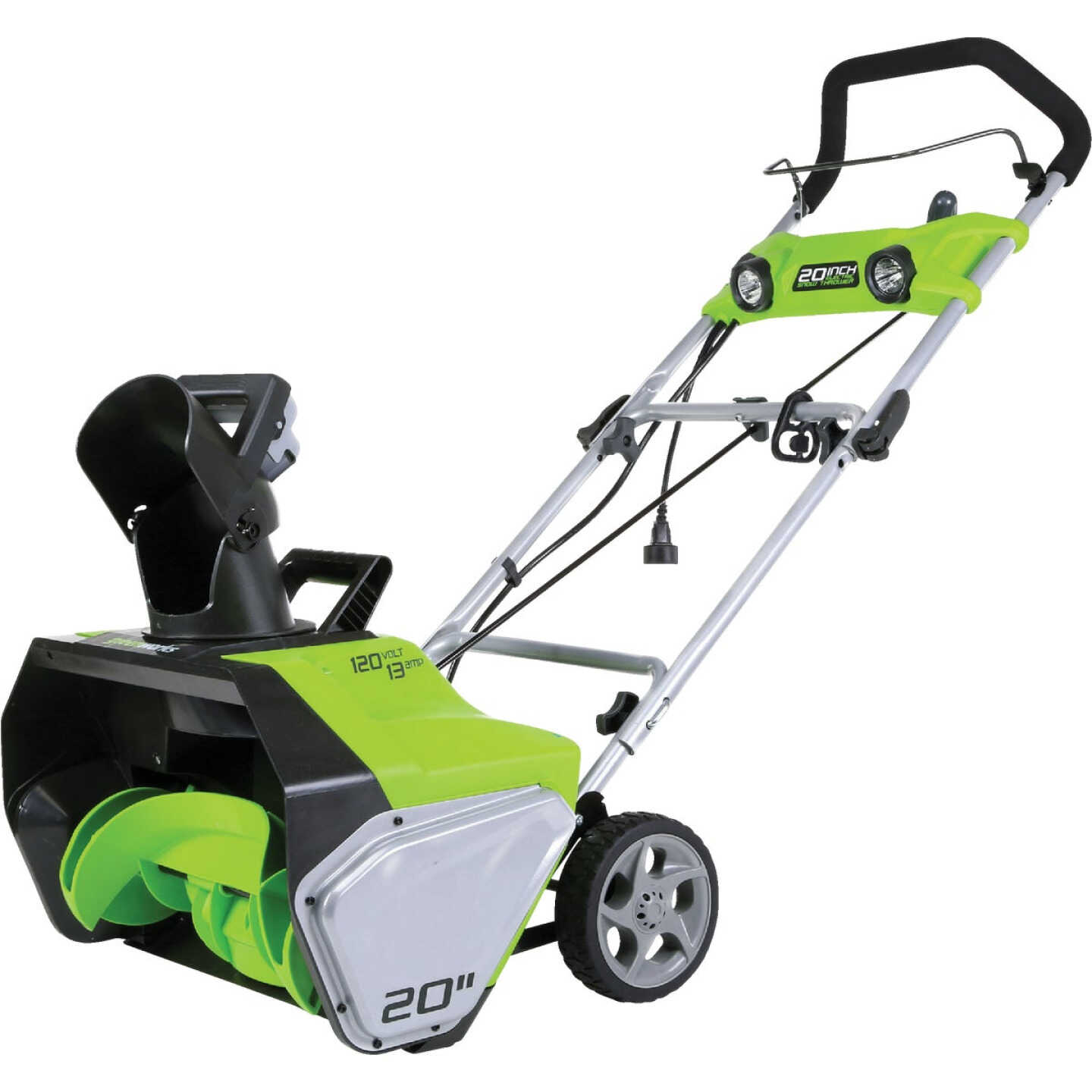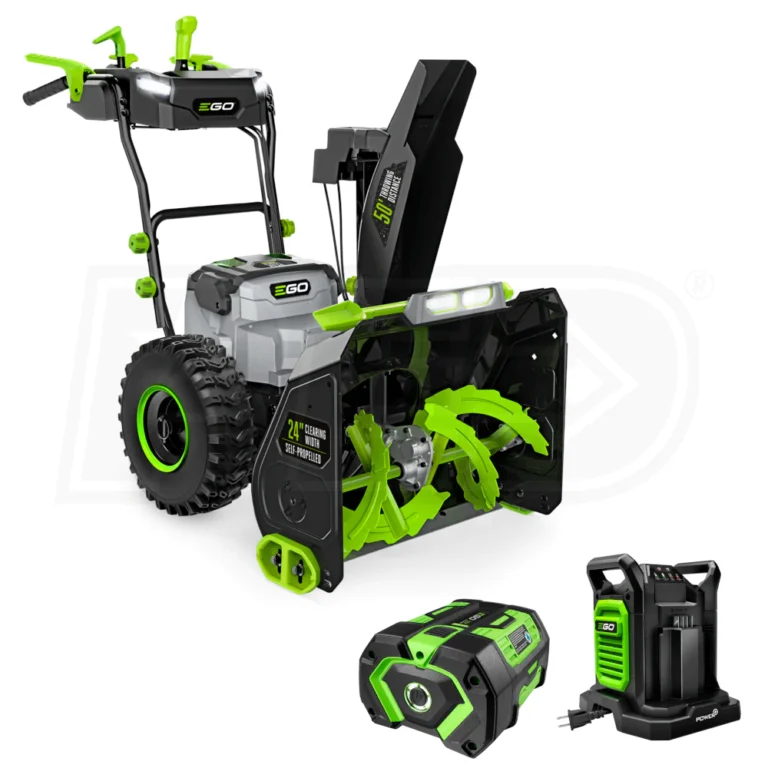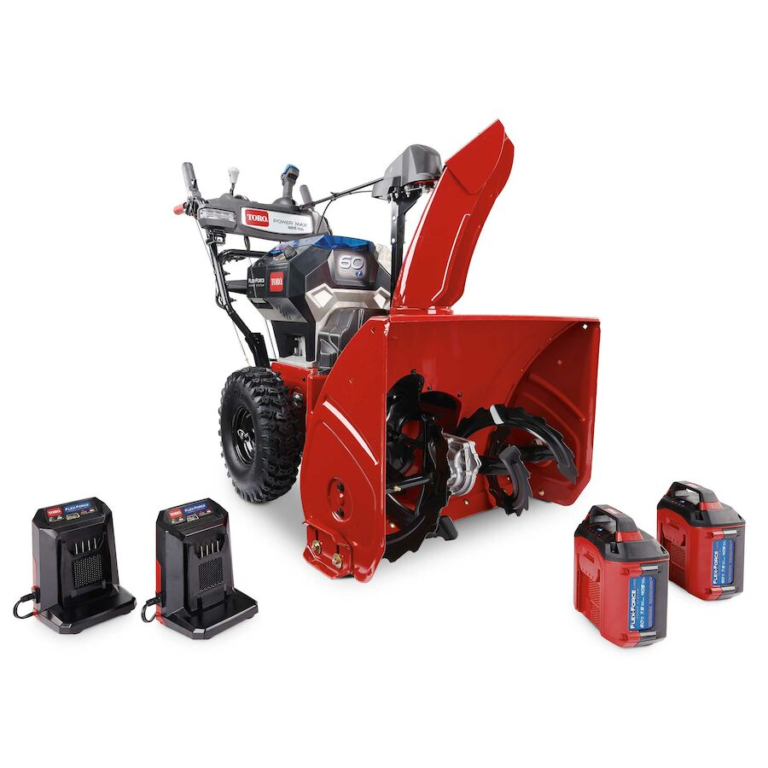Snow removal is a seasonal chore that many of us face, especially those that spend winters in regions like Minnesota, where winters bring abundant snowfall. Electric snow blowers have emerged as a convenient solution, eliminating the backbreaking work of shoveling. However, the choice between a corded and a cordless electric snow blower is a crucial decision. In this guide, we’ll delve into the distinctions between these two types, helping you make an informed choice for your winter needs.
Corded Electric Snow Blowers
Power Source and Limitations
1. Connection to a Power Outlet
Corded electric snow blowers rely on a continuous power supply from an electrical outlet. This connection provides a reliable source of power but comes with the limitation of being tethered to a power source.
2. Cord Length Considerations
The cord length is a critical factor to consider. While longer cords provide more range, they can also become cumbersome. Users must manage the cord to avoid obstacles and ensure efficient snow removal.
Performance and Clearing Capacity
1. Motor Power and Efficiency
Corded models are generally equipped with robust motors, ensuring efficient snow removal. The consistent power supply contributes to steady performance, making them suitable for various snow conditions.
2. Suitable Snow Depth and Types
Corded electric snow blowers are effective for moderate snow depths. However, users may face challenges with heavy, wet snow or icy conditions, where additional power or specialized features might be necessary.
Cordless Electric Snow Blowers
Power Source and Mobility
1. Battery Technology and Capacity
Cordless electric snow blowers operate on rechargeable batteries, providing mobility without the constraints of a power cord. The battery’s technology and capacity significantly impact the blower’s performance and runtime.
2. Freedom of Movement
The absence of a power cord grants users the freedom to move around without limitations. This makes cordless models particularly advantageous for larger properties or areas where outlets are scarce.
Performance and Clearing Capacity
1. Battery Life and Its Impact on Usage
The battery life is a crucial consideration. While advancements in battery technology have improved longevity, users must assess whether the runtime aligns with the size of their property and the typical snowfall in their region.
2. Suitable Snow Depth and Types
Cordless models are versatile but may struggle with heavy snow or extended clearing sessions. Understanding the blower’s limitations is essential to avoid frustration during intense snowfall.
Comparison between Corded and Cordless Options
Pros and Cons of Each Type
1. Corded Advantages and Disadvantages
Advantages:
- Reliable power supply
- Suitable for moderate snow conditions
- Generally more affordable
Disadvantages:
- Limited mobility due to the power cord
- Challenges with obstacles and cord management
- Not ideal for heavy or wet snow
2. Cordless Advantages and Disadvantages
Advantages:
- Increased mobility with no power cord
- Suitable for a variety of snow conditions
- Quieter operation compared to some corded models
Disadvantages:
- Higher upfront cost
- Limited runtime may require multiple battery charges for extensive use
- May struggle with heavy, wet snow or icy conditions
Considerations for Specific Use Cases
1. Urban Settings vs. Larger Properties
In urban settings with easy access to power outlets, a corded electric snow blower may suffice. However, for larger properties or areas with limited outlets, a cordless model offers the necessary mobility and convenience.
2. Environmental Impact and Energy Efficiency
Considering the environmental impact is essential. Cordless models, while offering mobility, rely on batteries that require periodic replacement. Corded models, on the other hand, consume electricity directly from the grid.
Maintenance and Durability
Longevity of Corded vs. Cordless Models
1. Wear and Tear on Cords
Corded models may experience wear and tear on the power cord, requiring careful handling to prevent damage. Regular inspection and maintenance are necessary to ensure continued reliability.
2. Battery Lifespan and Replacement Considerations
Cordless models depend on rechargeable batteries, and their lifespan varies. Understanding the battery’s longevity and potential replacement costs is crucial for long-term ownership.
Cost Considerations
Initial Investment
1. Cost of Corded Electric Snow Blowers
Corded models are generally more affordable upfront, making them an attractive option for budget-conscious consumers.
2. Cost of Cordless Electric Snow Blowers
Cordless models typically have a higher initial cost due to the advanced battery technology. However, the long-term benefits may outweigh the upfront investment.
Operating Costs
1. Electricity Consumption for Corded Models
Corded models consume electricity directly from the grid, and users should consider the impact on their energy bills.
2. Battery Replacement Costs for Cordless Models
While cordless models offer mobility, users must factor in the periodic cost of replacing batteries. Understanding these ongoing expenses is vital for budget planning.
Conclusion
In the world of electric snow blowers, the choice between corded and cordless models hinges on various factors. Understanding the specific needs of your property, considering the type of snowfall in your region, and evaluating the long-term costs are crucial steps in making an informed decision. Whether you prioritize mobility, consistent power supply, or cost-effectiveness, there’s a suitable electric snow blower for every winter warrior. As you gear up for the snowy season, weigh the pros and cons carefully to ensure a hassle-free and efficient snow removal experience.




